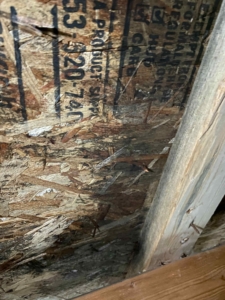Bathtubs vs Showers: What Inspectors Really Care About
Serving Chisago County, Washington County, and the whole north‑metro Twin Cities
A quick story from the field

Last month, in Taylors Falls, I opened the access panel behind a jetted tub and found the OSB sheathing dark as a Minnesota winter morning. A pin‑hole leak in the supply line had been misting the cavity for years. The sellers swore they “only filled the tub on special occasions,” yet the subfloor read 22 percent moisture, far above the safe 16 percent threshold. That small anecdote sums up why inspectors obsess over the bath‑versus‑shower debate. Water is sneaky, and the way you bathe changes how it behaves.
1. Water use
-
Full tub: The U.S. EPA pegs a filled bathtub at about 70 gallons of water STANFORD magazine.
-
Typical bath: Municipal studies show the average soak lands closer to 30 gallons Portland.gov.
-
Eight‑minute shower: With a 2.1 gpm low‑flow showerhead, you are around 17 gallons Portland.gov.
In short, short showers almost always beat baths in terms of water consumption. Longer, spa‑style showers punch above 25 gallons and can erase the savings quickly. If you are eyeing upgraded fixtures, the EPA WaterSense Shower Better campaign lays out simple swaps that save thousands of gallons a year, worth a read if you own property in water‑conscious Washington County. Visit the EPA guide.
2. Moisture risk
Bathtubs concentrate water in a single vessel but raise three red flags:
-
Splash zone – Kids cannonballing can defeat any caulk bead.
-
Decked tubs – Drop‑ins surrounded by wood trim invite hidden leaks.
-
Overflow gaskets – Rubber gaskets harden and drip down the drain stack unnoticed.
Showers spread moisture across larger surfaces. Common issues I document in north‑metro homes include poorly sloped curbs, cracked grout at corners, and ventilator fans undersized for the steam load. Walk‑in showers without thresholds are trending, yet they demand flawless pitch and continuous waterproof membranes—details some flippers skip.
3. Resale value
Local appraisers tell me that in Chisago County starter homes, a functional shower in at least one full bath satisfies most buyers. High‑end listings in Stillwater and Forest Lake still command a premium for a soaking tub in the primary suite. National Remodeling Magazine surveys put a 67‑71 percent return on mid‑range bathroom updates; however, the intangible wow‑factor of a freestanding tub often seals deals faster in competitive markets. My advice is simple: prioritize a shower for daily efficiency, add a tub only if space and budget allow—and always waterproof like the next owner is an inspector.
What your inspector really checks
| Component | Bathtub Focus | Shower Focus |
|---|---|---|
| Visible plumbing | Supply valves, overflow gasket, pump | Mixing valve, showerhead flow rate |
| Structure | Subfloor deflection, joist notching | Pan pitch, curb waterproofing |
| Ventilation | Fan CFM vs room volume | Same, but more critical for steam |
| Safety | Slip resistance, grab bars | Tempered glass, anti‑scald control |
Pro tip: scope the sewer while we are there
Whenever a bathroom remodel crops up I suggest adding a sewer camera inspection. A partially clogged line will make that new shower pan useless in a hurry. You can see the add‑on cost on our fees page and decide if the peace of mind is worth it. Eighty percent of my sewer scopes in older Washington County homes discover root intrusion, just saying.
Final thoughts
Whether you love a candle‑lit soak or a five‑minute power shower, remember that water savings, moisture control, and resale appeal all hinge on proper installation. When Mason Home Inspections walks through a property, we treat plumbing as a system, not a fixture. Ready to get the full story on your future home? Book an inspection today and let a neighborly expert keep your investment dry, efficient, and market-ready.

Leave a Reply
Want to join the discussion?Feel free to contribute!